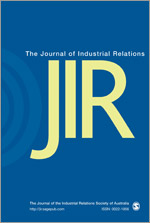The frames of reference model developed by Fox, and extended by a number of other authors, is arguably the central paradigm framework in the employment/industrial relations field. Despite its importance and popularity, use of frames of reference to structure empirical analysis and develop hypotheses is relatively rare and, to the best of our knowledge, the framework and its key constructs and principles have themselves never been empirically examined with data from a representative cross-section of workplaces using quantitative methods. This article, with the aid of a new four-country (Australia, Canada, UK, and US) survey data set on 7000+ workplaces, initiates this kind of empirical study. The frames of reference distinguish three main types of employment relationships: unitarist, pluralist, radical. We select six attitudinal/behavioral indicators from the data set that distinguish which frame a workplace is in, combine them to form a Relational Quality Index, plot the 7000+ Relational Quality Index observations as four-country frequency distributions, and use different statistical criteria to indicate the relative size of each frame. We next do regression analysis in which the 7000+ workplace Relational Quality Index scores are the dependent variable and construct from the data set 20 frames of reference explanatory variables. As theory predicts, workplaces with stronger common (opposed) interests have better (worse) employer–employee relations.
Publication Type
- Article



